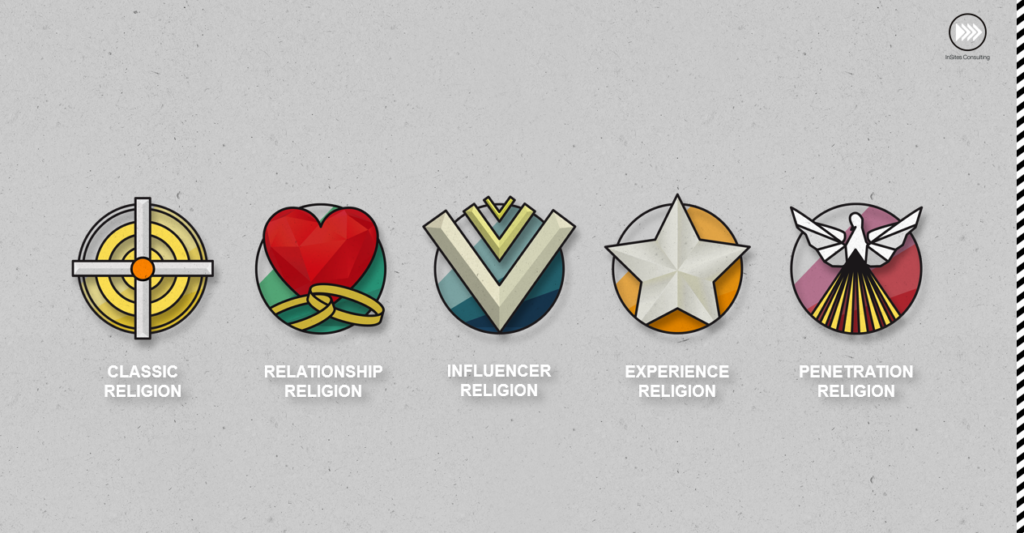Designing the right brand tracker for your ‘Brand Religion’
Brand trackers serve as an ongoing finger on the pulse, gaining insights into the extent to which a brand is performing in line with its brand strategy. However, trackers are probably among the most static, repetitive and unidimensional research solutions out there. If you were to compare two random brand trackers, chances are they will be characterized by a similar research design, probably centered around measuring the same brand funnel.
Trackers should be a combination of all KPIs and metrics that are drivers of assumed brand success and thus should be aligned with brand strategy. As all brands are different and have different strategies, each brand’s success should likewise be defined and measured differently.
Yet, most trackers are static, unidimensional, plain vanilla and consequently not actionable. That is why we make our brand trackers bespoke, applying alternating modules depending on a brand’s marketing mix and contextual events. Before starting your brand tracking research, it is therefore essential to understand what ‘Brand Religion’ (or mix thereof) is right for your brand!
Step one: Determining your ‘Brand Religion’
As elaborated in our Brand Religions bookzine, an abundance of books and theories is guiding marketers in building, crafting and growing string brands. We found that we can bundle these various streams of thought into five ‘Brand Religions’: the Classic, Relationship, Influencer, Experience and Penetration Religions. Each provides a different viewpoint on what defines brand success, what to aim for, and which key performance indicators to pursue.

Key for brands is to focus and choose a ‘religion’, which can be a pure form of one of the above, or a mix of (non-contradictory) religions. This choice of brand religion (mix) not only shapes how one defines brand success, it also outlines how one should measure brand and communication performance.
At InSites Consulting, we do not believe in a one-size-fits-all approach or that there is a right or a wrong one. Our belief is that your brand tracker should be customized and optimized according to your marketing strategy.
Step two: Choosing the right KPIs and metrics
We go beyond the standard measures and help you choose the right KPIs and metrics, to ensure you track and evaluate your brand performance in the most appropriate way. There are many we can select depending on your ‘Brand Religion’, such as:
Classic Religion
KPIs – Brand Loyalty (attitudinal, behavioral, product availability and price resistance)
Metrics – brand uniqueness…
Relationship Religion
KPIs – Brand Identification and Brand Love
Metrics – brand archetypes, brand emotions, respect, passion…
Influencer Religion
KPIs – NPS, Consumer Advocacy
Metrics – conversation mapping, e.g. volume, sentiment…
Experience Religion
KPIs – Brand Memorability, Customer Service Experience
Metrics – brand delivery, delight, customization…
Penetration Religion
KPIs – Priority in mind, Mental market share
Metrics – perceived physical availability, spontaneous distinctive assets…
Step three: Building your modules
You can choose fixed blocks that fit your ‘Brand Religion’ – and you can move on to different modules over the course of time. Next to adding an alternative religion, you can also add chapters depending on your marketing mix. For example, if you just launched a new product or pack, you can include an SKU module; if you are running an advertising campaign, you could add an ad effectiveness chapter or simply assess the continuous performance of your communication channels and touchpoints (e.g. mass marketing, influencers or interactions).
No two brands are the same, so why is it that we measure them the same way? It’s time to ditch standardized brand research and start designing the right brand tracker for your brand!




